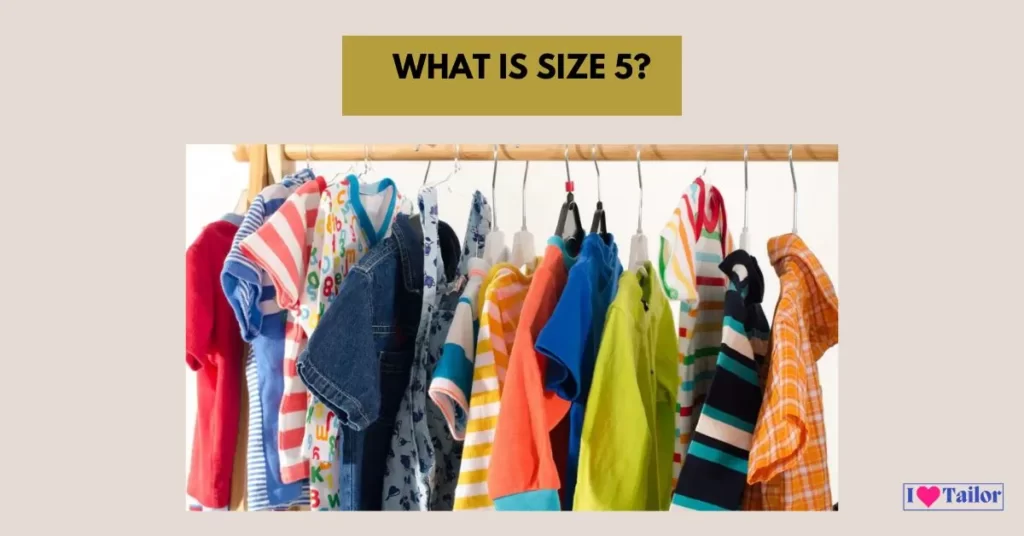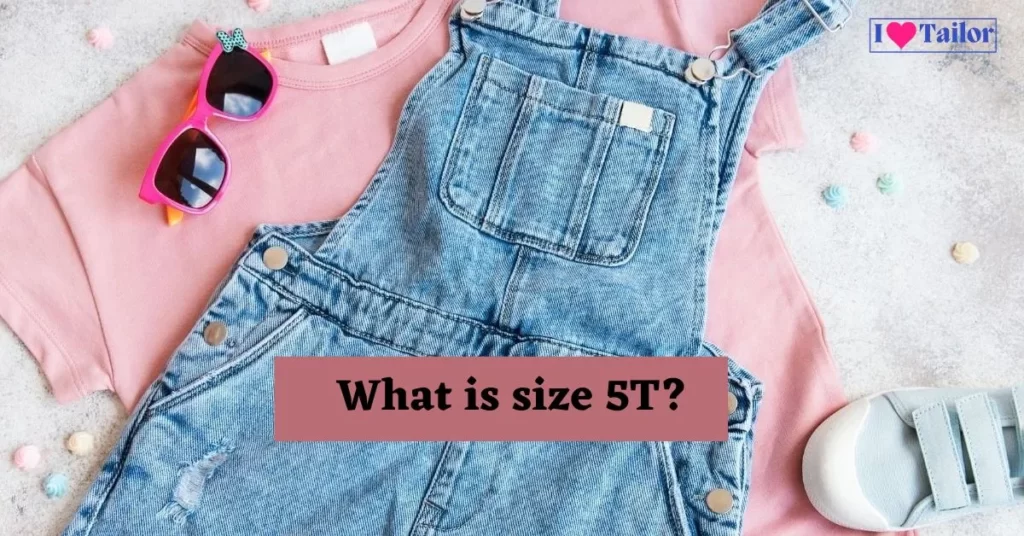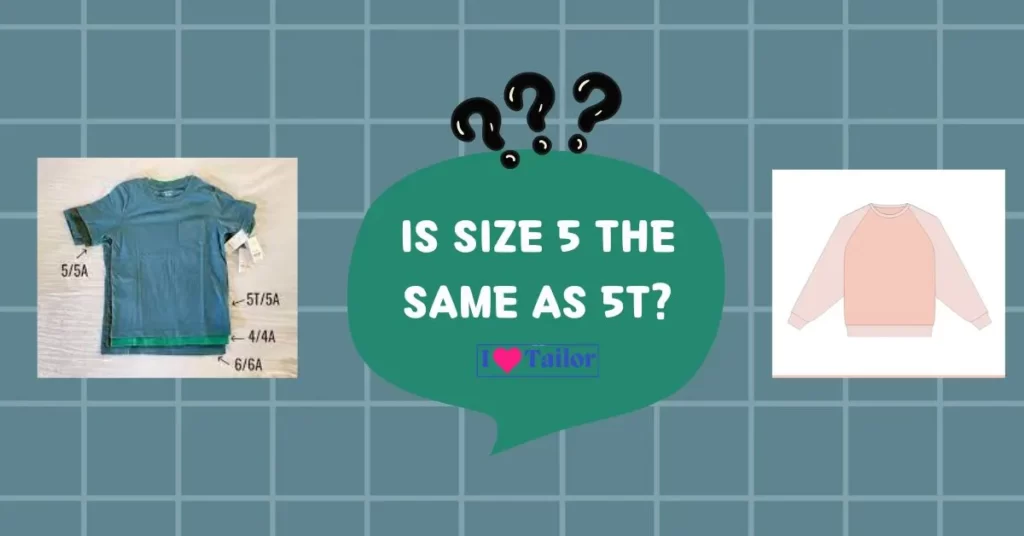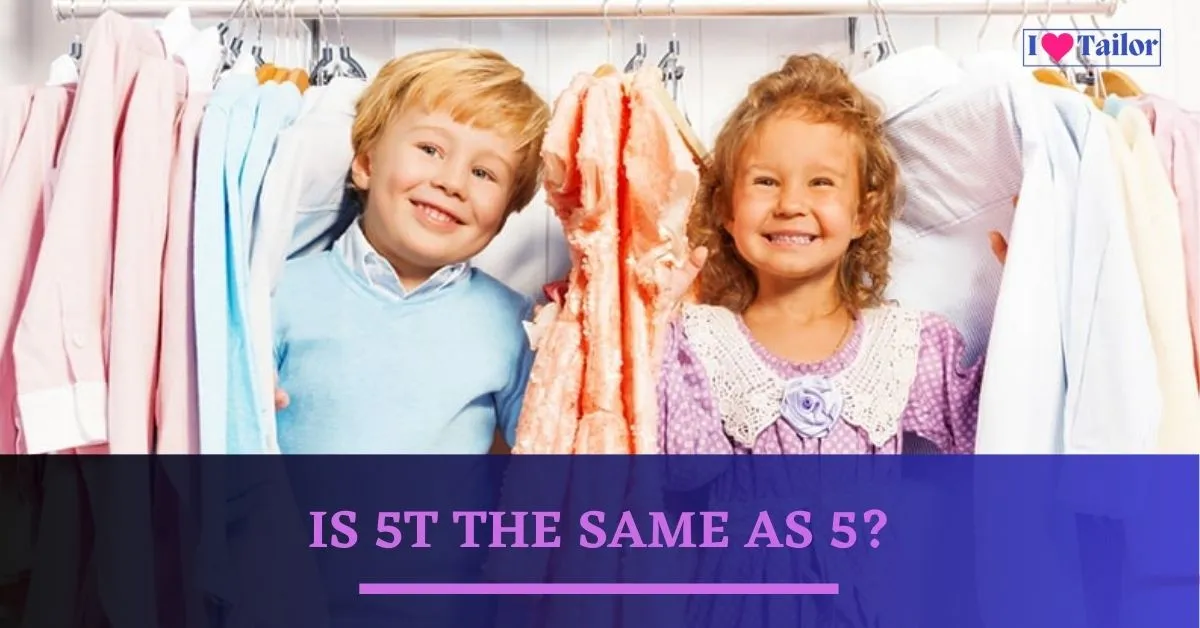Is 5t the same as 5?
When you discover sizes like 5 and 5T, shopping for children’s apparel might feel like going through a confusing maze.They may, at first sight, seem to be identical, there are some key differences between these sizes, each of which was created to accommodate the various phases of a child’s growth. In this thorough post, “Is 5t the same as 5?” We’ll look at what these sizes mean, how they relate, and why understanding the differences is important.
Also read: What to wear to a visitation man?
Understanding the ‘T’ in Sizes
The mysterious ‘T’ you often see in children’s clothing sizes stands for “toddler.” This distinction is significant as it impacts the overall fit and design of the clothing item. Toddler sizes typically range from 2T to 5T. The number preceding the ‘T’ is an approximate match with a child’s age. Thus, 2T would ideally fit a two-year-old, 3T a three-year-old, and so forth up to 5T. This isn’t a one-size-fits-all rule since children grow at different rates. It’s just a general guideline to give you a starting point when choosing sizes.
What is size 5?

Size 5 is a standard children’s size, typically designed for kids aged between 5 and 6 years. The primary considerations in designing size 5 clothing are the child’s height and weight. These outfits don’t provide additional room for diapers, making them a more suitable choice for children who no longer need them.
Size 5 clothing is designed for kids who have outgrown the toddler size category but haven’t yet experienced the growth spurts that come with pre-adolescence. Clothes in this size offer a slim fit as they’re designed for older kids who are starting to lose their toddler ‘chubbiness’.
What is size 5T?

Size 5T, where ‘T’ stands for ‘toddler,’ is specifically designed for children typically between 4 and 5 years old. Unlike size 5, these clothes accommodate the fact that the child might still be wearing diapers and hence offer extra room in the waist and hip area. Size 5T clothing is rounded and provides a fuller fit, catering to the physique of toddlers at this age, who may be slightly rounder than their older counterparts.
Comparing Size 5 and 5T: A Detailed Table
Here’s a detailed comparison of these two sizes to provide a clearer understanding:
| Parameter | Size 5 | Size 5T |
| Age Range | Designed for kids aged 5–6 years | Best for toddlers aged 4-5 years |
| Diaper Accommodation | Does not provide extra room for diapers | Provides extra room for diapers |
| Fit and Shape | Slimmer fit for older kids who’ve outgrown their toddler physique | Fuller, rounded fit to accommodate the typical toddler body shape |
| Cut | Cut longer to match the height and weight of a 5 to 6-year-old | Cut slightly shorter and broader to fit 4 to 5-year-olds |
| Occasion | Ideal for schoolwear and formal occasions | More casual and comfortable for playtime and naptime |
Is Size 5 the Same as Size 5T?

To answer the main question, no, sizes 5 and 5T are not the same. While both are meant for children, they cater to different age groups, developmental stages, and body proportions.
- Age and Development Stage: The primary difference between these sizes is the age group and developmental stage they’re designed for. Size 5 clothes are for older kids around the age of 5–6 years, while size 5T is designed for younger, still-developing toddlers aged 4-5 years.
- Diaper Accommodation: Another significant difference is the consideration for diaper accommodations. Size 5T clothes are designed to accommodate diapers, providing extra room around the waist and hip areas. Size 5 clothing, on the other hand, doesn’t provide this extra room because kids who wear it are typically out of the diaper stage.
- Fit and body shape: The cut and fit of the clothes also significantly differ. Size 5 clothes provide a slimmer fit, catering to kids who have started to lose their toddler chubbiness. On the other hand, 5T clothes are designed with a fuller, more rounded fit, accommodating the typical toddler physique.
Why does the Difference matter?
Understanding the difference between size 5T and size 5 is crucial for ensuring the comfort and fit of the child’s clothes. Size mismatches could lead to discomfort and restricted movement for the child. Properly fitting clothes also allow for better durability since they won’t be overstretched or underutilized.
Also read: How to get the highlighter out of clothes?
Simple Tips for Choosing Your Kid’s Clothes
Picking out clothes for your kids can sometimes feel like a real challenge. Don’t worry, I’ve got some straightforward tips that will help you out.
- Get the right size: First things first, you’ve got to know what size your kid is currently wearing. Keep track of their height and weight, and remember that sizes can vary a lot between brands.
- It’s All About the Material: When you’re shopping, check out what the clothes are made of. Try to stick to breathable and natural fabrics like cotton, especially for those hot summer days. And for the colder months, heavier fabrics like wool are your best bet.
- Make dressing easy: Here’s a pro tip: go for clothes that make dressing easier, especially if your little ones are starting to dress themselves. Wide necks, loose cuffs, and zippers or snaps instead of buttons can be lifesavers.
- Versatility is key: Kids grow super fast, so you want clothes that can keep up with them. Look for clothes with features like elastic waistbands or extendable cuffs that can grow with your child. And when in doubt, buying a size larger won’t hurt.
- Comfort comes first: Steer clear of clothes with tight elastic bands, rough seams, or scratchy tags. And if your child has sensitive skin, you might want to avoid clothes with lots of embellishments that could irritate them.
- Go for easy care: Kids will be kids, and that often means messes. So pick clothes that are easy to care for. Machine-washable is a must, and if you can find clothes that are wrinkle-free or stain-resistant, even better.
- Let your child have a say: If your kid is old enough, let them help pick out their clothes. It can make them feel more comfortable and confident in what they’re wearing, and it can be a fun activity to do together.
FAQs
Is 5T the same as 5 across all brands?
No, the size can vary significantly between different brands. Always check the brand’s size chart when available.
When should my child transition from 5T to 5?
The transition varies for each child and depends on their height, weight, and growth.
Is there a size 5T diaper?
No, diaper sizes are different from clothing sizes and usually range from size N (newborn) to size 6.
How do I measure my child’s clothing sizes?
You can measure your child’s height, weight, and chest size. Compare these measurements to the brand’s sizing chart.
Is size 5 bigger than size 5T?
In children’s clothing, size 5 and size 5T are designed for different body shapes, but size 5T is generally not bigger than size 5. While 5T is tailored for toddlers with room for diapers, size 5 is styled for older kids who are toilet-trained. Both sizes can vary by brand, so it’s essential to check specific sizing charts.
How do I measure my child’s clothing sizes?
You can measure your child’s height, weight, and chest size. Compare these measurements to the brand’s sizing chart.
Is there size 5T diapers?
No, diaper sizes are different from clothing sizes and usually range from size N (newborn) to size 6.
When should my child transition from 5T to 5?
The transition varies for each child and depends on their height, weight, and growth.
Is 5T the same as 5 across all brands?
No, the size can vary significantly between different brands. Always check the brand’s size chart when available.
Conclusion
Understanding the difference between 5 and 5T comes down to the child’s height, weight, and development rate, as well as brand-specific size, even though it may appear complicated.
This information should assist you in selecting clothing for your child with knowledge. Regardless of what the label says, the important thing is to guarantee comfort and a proper fit. You should also always take your child’s particular demands into account. Their clothing will develop as they do.
Happy shopping!

